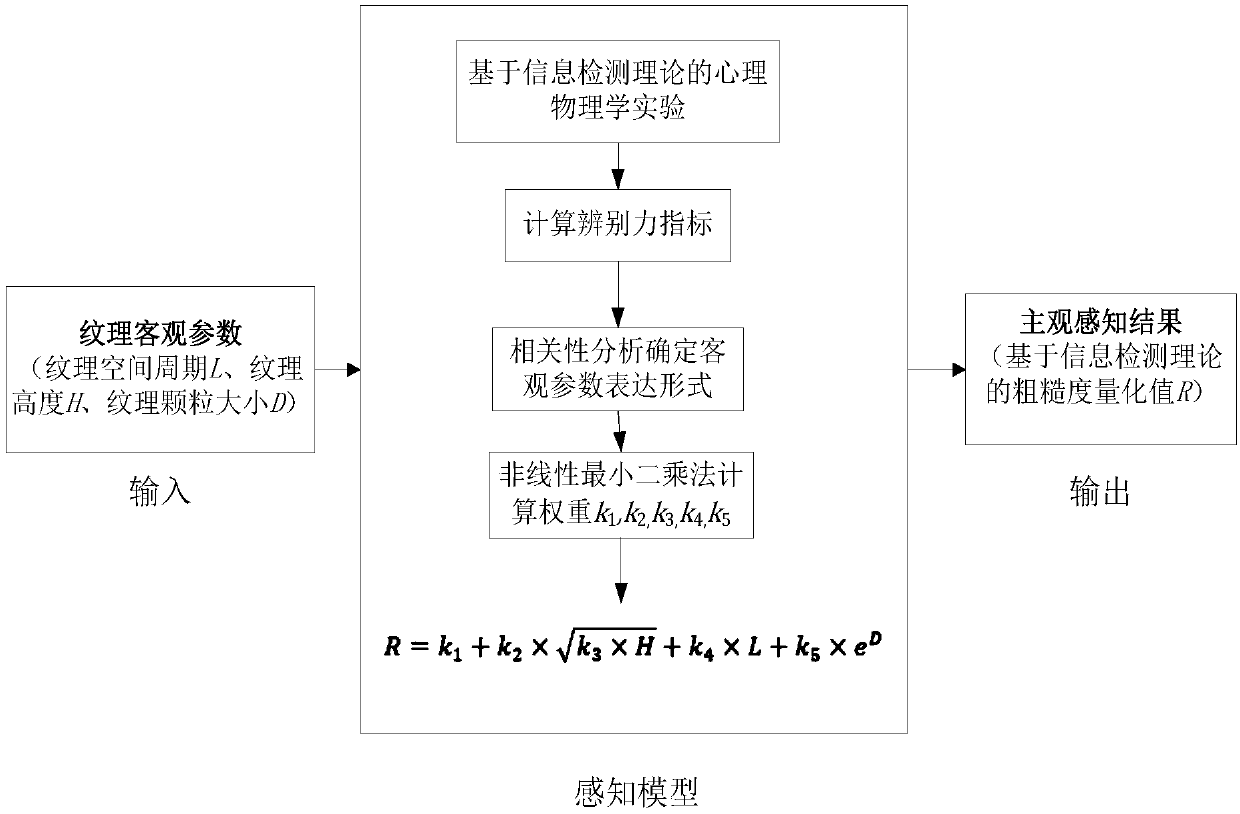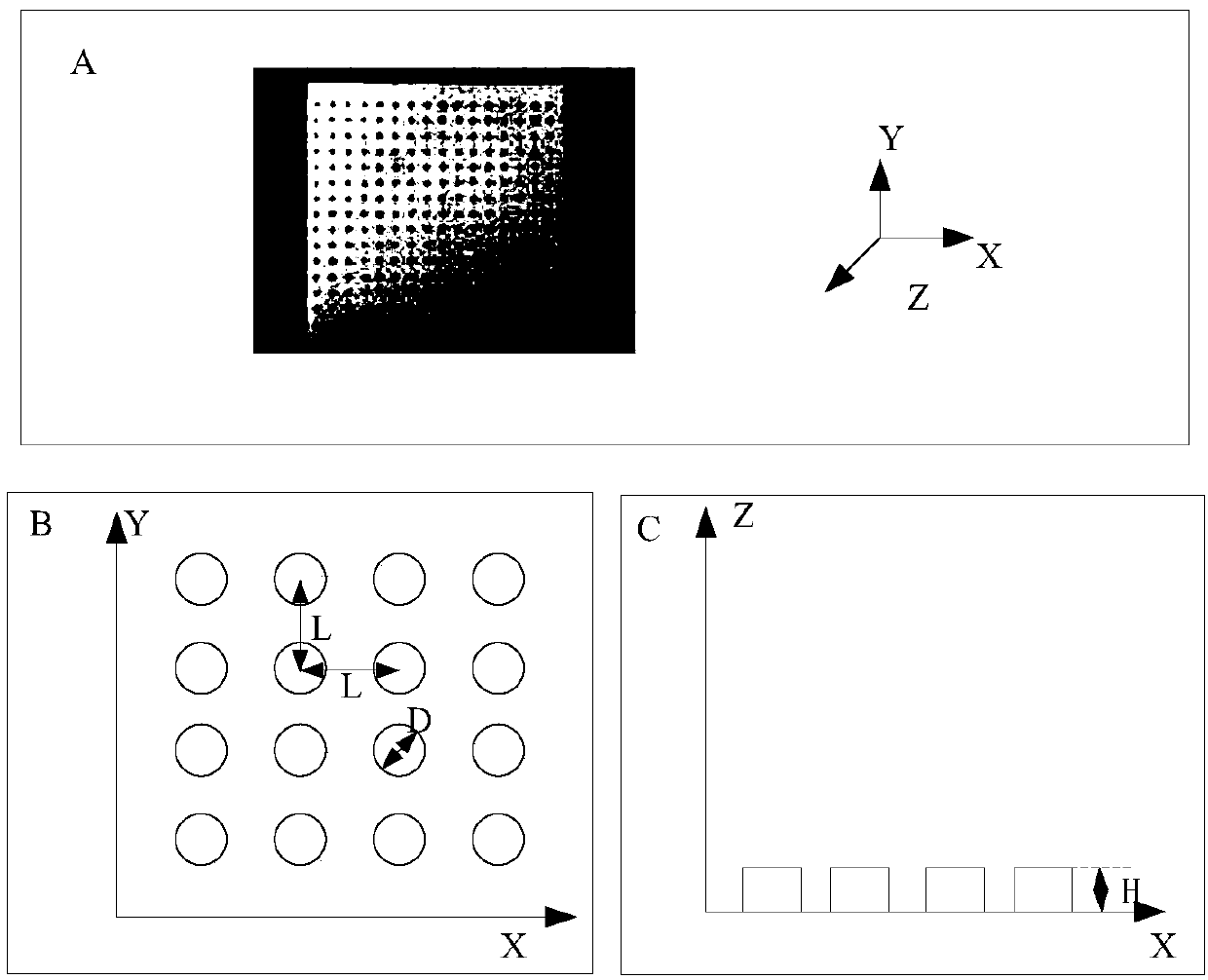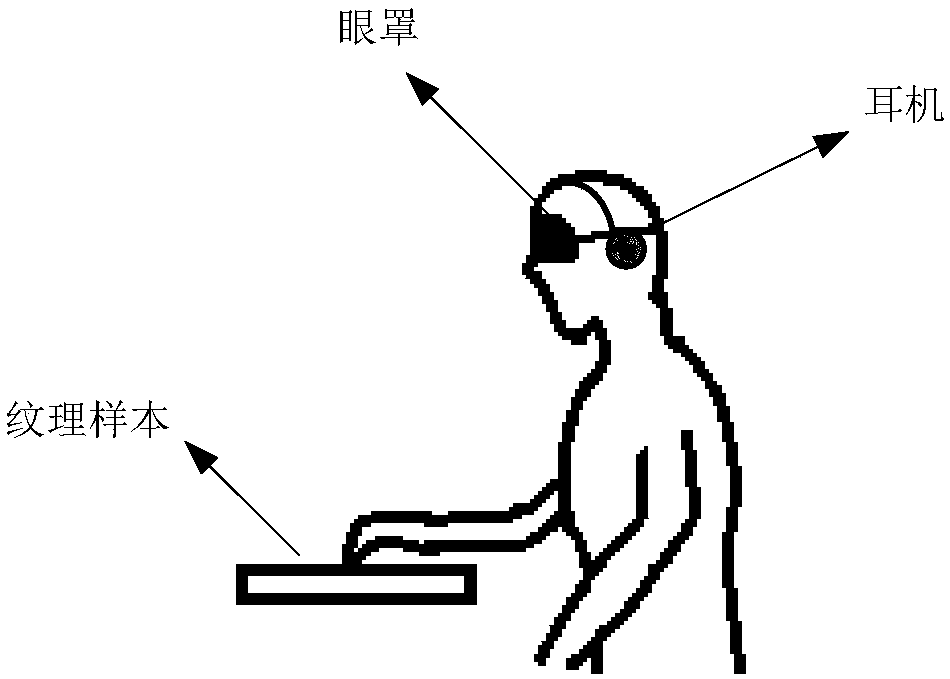Textural coarseness quantitative evaluation method based on signal detection theory
A technology of signal detection and evaluation method, applied in diagnostic signal processing, diagnostic recording/measurement, medical science, etc., can solve the problems of unstable subjective perception results and inaccurate roughness evaluation, and achieve stable and reasonable subjective perception results. improved effect
- Summary
- Abstract
- Description
- Claims
- Application Information
AI Technical Summary
Problems solved by technology
Method used
Image
Examples
Embodiment Construction
[0026] Embodiments of the present invention will be described below in conjunction with the accompanying drawings.
[0027] Such as figure 1 As shown, the present invention designs a texture roughness quantification evaluation method based on signal detection theory. The method takes texture space period L, texture height H, and texture particle size D as examples, and uses signal detection theory to design roughness perception experiments. And calculate and quantify the roughness perception results through discrimination index. The ANOVA correlation is used to analyze the correlation strength between the texture objective parameters and the discrimination index, and the non-linear least square method is used to calculate the weight of each objective texture parameter, and the roughness perception evaluation model is established. This method specifically comprises the following steps:
[0028] Step 1. Use the psychophysical experimental method of signal detection theory to c...
PUM
 Login to View More
Login to View More Abstract
Description
Claims
Application Information
 Login to View More
Login to View More - R&D
- Intellectual Property
- Life Sciences
- Materials
- Tech Scout
- Unparalleled Data Quality
- Higher Quality Content
- 60% Fewer Hallucinations
Browse by: Latest US Patents, China's latest patents, Technical Efficacy Thesaurus, Application Domain, Technology Topic, Popular Technical Reports.
© 2025 PatSnap. All rights reserved.Legal|Privacy policy|Modern Slavery Act Transparency Statement|Sitemap|About US| Contact US: help@patsnap.com



